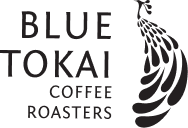We’re really excited to show you our newly designed coffee pouches! Our latest look still contains some of our favourite elements from our old pouches along with the same coffee you’ve always loved!
It was important for us to explain why we made this change for two reasons. Firstly, because we know that some of you were as attached to the old designs as we were and would appreciate insights into the changes. Secondly, and more personally, we would have loved for someone to have shared this information with us when we were starting out. Since a number of our customers are start-up owners or in the process of starting something, we hope this information is helpful.
At the heart of this decision lies the need to make our packaging gentler on the planet. And while we were at it, we decided to add on features that we thought would help our customers choose coffees in an easier manner.
What do the new pouches feature?
One of our main goals is to get more people to quickly choose coffees that they’d enjoy so we devised a colour system to simplify coffee buying decisions without having to browse through all the options. We’ve colour coded each coffee to represent different flavour profiles like bold and bitter, chocolatey and nutty, delicate and complex, fruity and punchy, balanced, and experimental. So, if you like darker, more bitter coffees, for example, the coffees in the green pouch with the Mandana art are for you. Into innovative light roasts? The orange pouch with the Madhubani art is for you. Don’t worry, you don’t have to remember the colours or the artwork; each pouch will clearly state a range of flavours so you can see which ones appeal to you.
More about the art, please.
Since we love art as much as we do our coffee, each flavour profile and colour will have art associated with it. We’ve found inspiration in various Indian artforms, from Mandana to Madhubani, Pithora, Warli and more. The new FSSAI rules for stating company information on the back of the pouches won’t allow us to dedicate the whole back cover to art, so we made sure to place the art we love so much up front and centre in our new packaging.

Our new pouches are 100% recyclable.
One of the things we’ve been seeking for a long time is completely recyclable pouches which our latest pouches are. What we looked into wasn’t just if the material were recyclable but we also diligently looked into the location and ease of using facilities that are available across the country to recycle these materials, and the process that packaging goes through before it finds its way to a landfill. Our new pouches can easily be recycled and segregated by your municipality, or you can take them to any recycling centre yourself. Alternatively, feel free to bring them to any Blue Tokai cafe and we’ll get them recycled for you.
During our research, we spoke to multiple companies (and came across some technical terms that you can read more about in our glossary) and this is what they shared with us:
“Until a few years ago, organized recycling only looked at PET to a large extent, and HDPE to a small extent for recycling as the collection of other polymers was rather difficult, especially in developing countries like India. With the introduction of Extended Producer Responsibility (EPR) across all polymers, recyclers are now actively adding capacity for recycling of LDPE.
Take-back systems that brand owners across the world have implemented have demonstrated success to ensure clean collection of post-consumer LDPE from the source of waste generation to the recycler's plant.”
Sebastian Frisch, Managing Partner, BlackForest Solutions
“It is important to look at the packaging material objectively. While on the face of it, paper packaging appears earthy and sustainable, as soon as the paper packaging is laminated with a thin layer of plastic, it becomes a multilayer packaging, thus making it difficult to recycle. As against that, an LDPE packaging offers a much cleaner option from a recyclability point of view.
Until recently, LDPE waste was largely used for downcycling blended with other recycled plastics to make low value plastic objects. However, with the advent of EPR, many technologies such as deinking are being used so that the recycled LDPE can be used in packaging material in the near future.”
Saurabh Shah, Managing Director, Landbell GreenForest Solutions, India
Will there be more changes to packaging in the future?
We’re always on the hunt for more sustainable options as packaging technology continues to evolve worldwide. We’ve spoken to some packaging companies who say that they are experimenting with even more recyclable and biodegradable solutions and we’ll be in constant touch with them to see how that development is going. However, these changes do take a while. For now, we’ve found a way to use the most recyclable material available in the country but if we make any changes, you’ll be the first to know.





